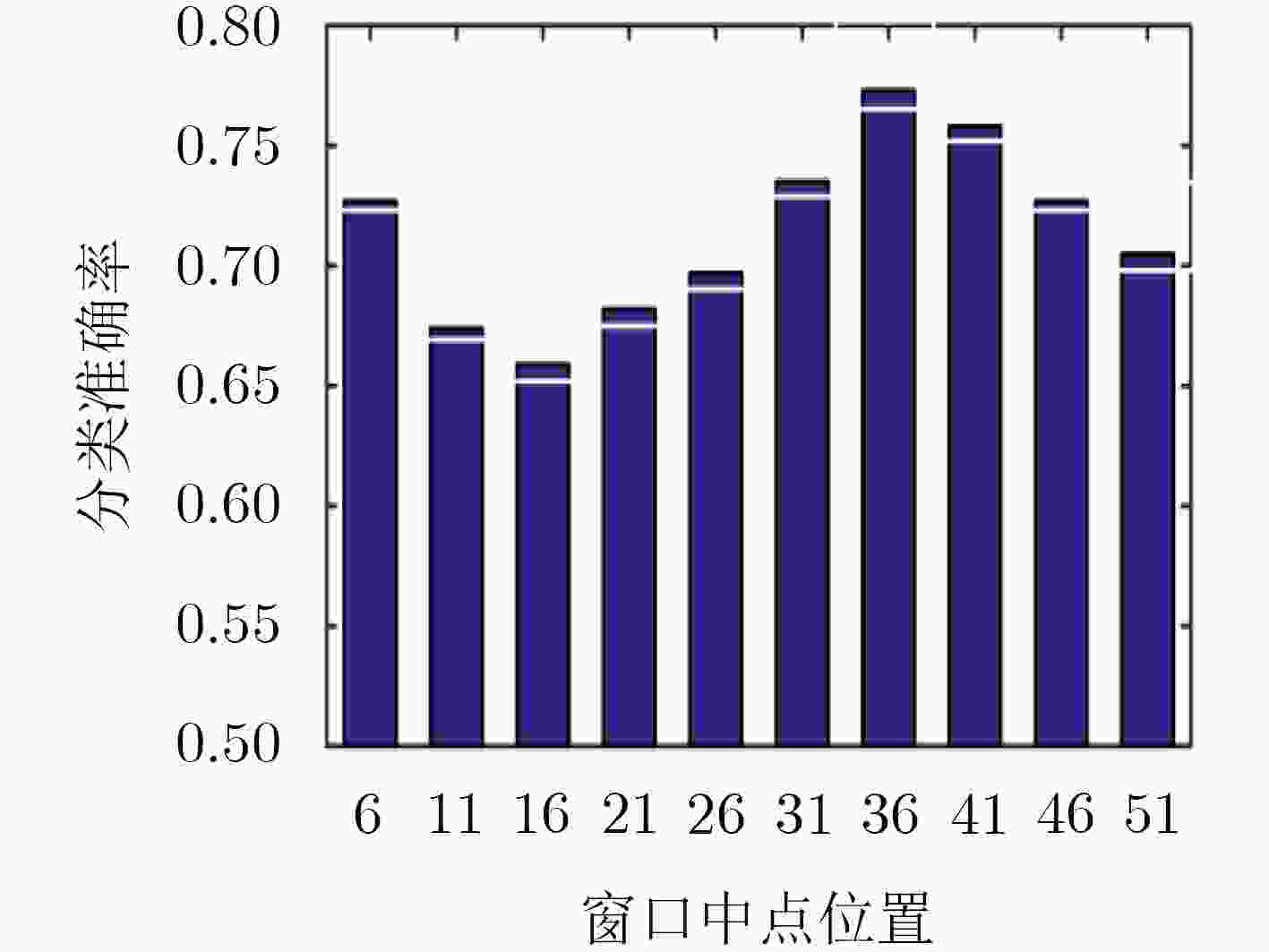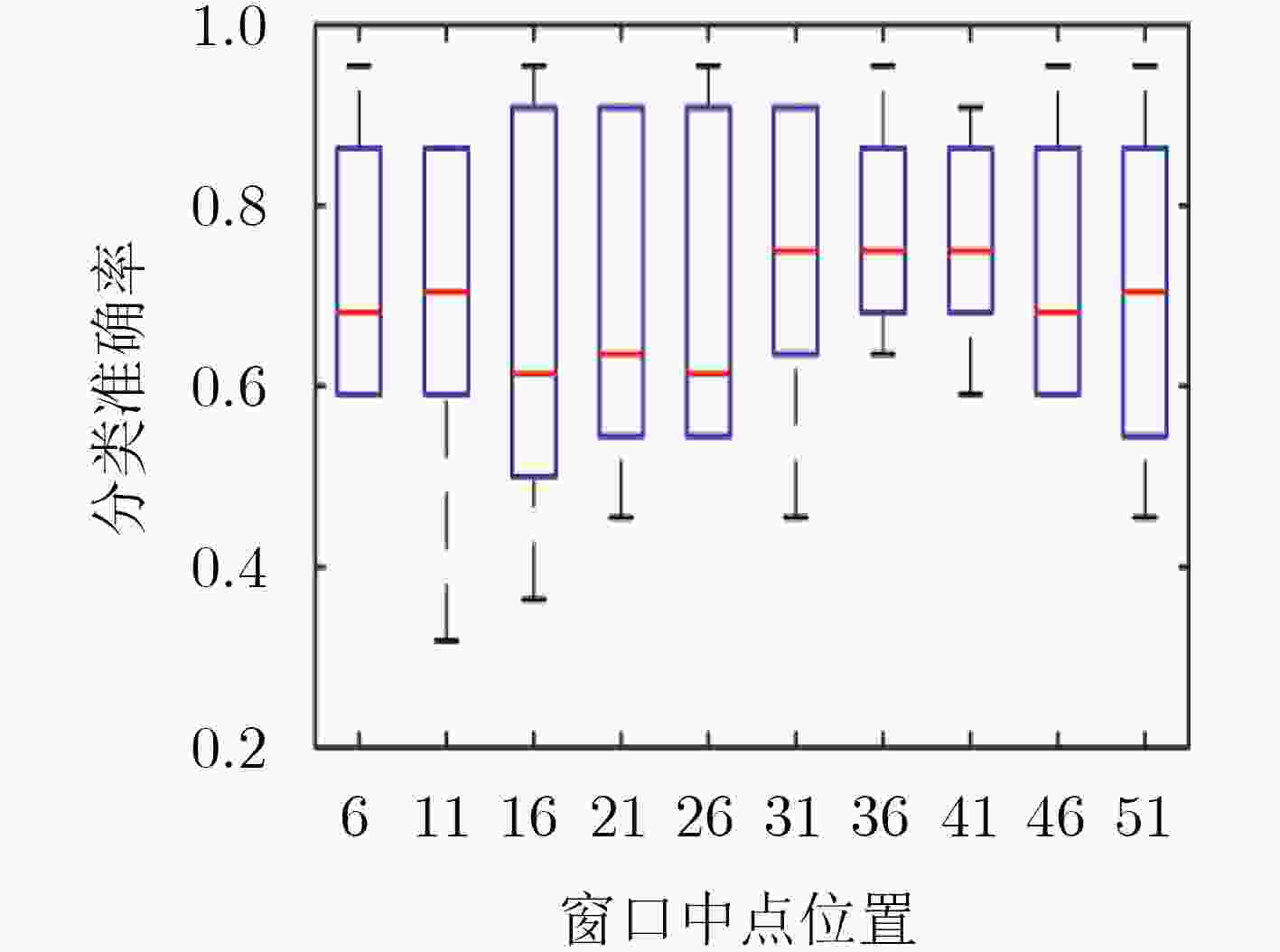Research on Support Tensor Machine Based on Synchronous Brain Network for Emotion Classification
-
摘要: 一直以来,情绪是心理学、教育学、信息科学等多个学科的研究热点,脑电信号(EEG)因其客观、不易伪装的特点,在情绪识别领域受到广泛关注。由于人类情绪是大脑多个脑区相互作用产生的,该文提出一种基于同步性脑网络的支持张量机情绪分类算法(SBN-STM),该算法采用相位锁定值(PLV)构建了同步性脑网络,分析多导联脑电信号之间的同步性和相关性,并生成2阶张量序列作为训练集,运用支持张量机(STM)模型实现正负情绪的二分类。该文基于DEAP脑电情绪数据库,详细分析了同步性脑网络张量序列的选取方法,最佳张量序列窗口的大小和位置,解决了传统情绪分类算法特征冗余的问题,提高了模型训练速度。仿真实验表明,基于支持张量机的同步性脑网络分类方法的情绪准确率优于支持向量机、C4.5决策树、人工神经网络、K近邻等以向量为特征的情绪分类模型。Abstract: Emotion has always been a research hot spot in many disciplines such as psychology, education, and information science. Electro EncephaloGram(EEG) signal has received extensive attention in the field of emotion recognition because of its objective and not easy to disguise. Since human emotions are generated by the interaction of multiple brain regions in the brain, an algorithm of Support Tensor Machine based on Synchronous Brain Network (SBN-STM) for emotion classification is proposed. The algorithm uses Phase Locking Value (PLV) to construct a synchronous brain network, in order to analyze the synchronization and correlation between multi-channel EEG signals, and generate a second-order tensor sequence as a training set. The Support Tensor Machine (STM) model can distinguish a two-category of positive and negative emotions. Based on the DEAP EEG emotion database, this paper analyzes the selection method of synchronic brain network tensor sequence, the research on the size and position of the optimal tensor sequence window solves the problem of traditional emotion classification algorithm which always exists feature redundancy, and improves the model training speed. The results show that the accuracy of the emotional classification method based on SBN-STM is better than support vector machine, C4.5 decision tree, artificial neural network, and K-nearest neighbor which using vectors as input feature.
-
图 4 32导联位置示意图[24]
-
赵国朕, 宋金晶, 葛燕, 等. 基于生理大数据的情绪识别研究进展[J]. 计算机研究与发展, 2016, 53(1): 80–92. doi: 10.7544/issn1000-1239.2016.20150636ZHAO Guozhen, SONG Jinjing, GE Yan, et al. Advances in emotion recognition based on physiological big data[J]. Journal of Computer Research and Development, 2016, 53(1): 80–92. doi: 10.7544/issn1000-1239.2016.20150636 THAMMASAN N, MORIYAMA K, FUKUI K I, et al. Familiarity effects in EEG-based emotion recognition[J]. Brain Informatics, 2017, 4(1): 39–50. doi: 10.1007/s40708-016-0051-5 MERT A and AKAN A. Emotion recognition from EEG signals by using multivariate empirical mode decomposition[J]. Pattern Analysis and Applications, 2018, 21(1): 81–89. doi: 10.1007/s10044-016-0567-6 KUMAR N, KHAUND K, and HAZARIKA S M. Bispectral analysis of EEG for emotion recognition[J]. Procedia Computer Science, 2016, 84: 31–35. doi: 10.1016/j.procs.2016.04.062 PINCUS S M and VISCARELLO R R. Approximate entropy: A regularity measure for fetal heart rate analysis[J]. Obstetrics and Gynecology, 1992, 79(2): 249–255. 郝志峰, 谢蔚涛, 蔡瑞初, 等. 基于因果强度的时序因果关系发现算法[J]. 计算机工程与设计, 2017, 38(1): 132–137. doi: 10.16208/j.issn1000-7024.2017.01.025HAO Zhifeng, XIE Weitao, CAI Ruichu, et al. Causal inference on time series using causal strength[J]. Computer Engineering and Design, 2017, 38(1): 132–137. doi: 10.16208/j.issn1000-7024.2017.01.025 刘澄玉, 赵莉娜, 刘常春. 生理信号时间序列周期性和平稳性对近似熵和样本熵算法的影响分析[J]. 北京生物医学工程, 2012, 31(2): 154–158, 163. doi: 10.3969/j.issn.1002-3208.2012.02.09LIU Chengyu, ZHAO Li’na, and LIU Changchun. Influence analysis of physiological time-series periodicity and stability for approximate entropy and sample entropy[J]. Beijing Biomedical Engineering, 2012, 31(2): 154–158, 163. doi: 10.3969/j.issn.1002-3208.2012.02.09 ITO T, HEARNE L, MILL R, et al. Discovering the computational relevance of brain network organization[J]. Trends in Cognitive Sciences, 2020, 24(1): 25–38. doi: 10.1016/j.tics.2019.10.005 高佳, 王蔚. 基于稀疏贝叶斯网络的情绪脑电的有效性脑网络研究[J]. 生物医学工程学杂志, 2015, 32(5): 945–951. doi: 10.7507/1001-5515.20150169GAO Jia and WANG Wei. Research of effective network of emotion electroencephalogram based on sparse Bayesian network[J]. Journal of Biomedical Engineering, 2015, 32(5): 945–951. doi: 10.7507/1001-5515.20150169 武杰, 周春宇, 杨叶, 等. 基于组独立成分分析方法的情绪刺激对脑部激活区域的研究[J]. 生物医学工程学进展, 2018, 39(3): 125–129. doi: 10.3969/j.issn.1674-1242.2018.03.001WU Jie, ZHOU Chunyu, YANG Ye, et al. Research on the brain activation region from emotion stimulation based on the group ICA method[J]. Progress in Biomedical Engineering, 2018, 39(3): 125–129. doi: 10.3969/j.issn.1674-1242.2018.03.001 MAHYARI A G, ZOLTOWSKI D M, BERNAT E M, et al. A tensor decomposition-based approach for detecting dynamic network states from EEG[J]. IEEE Transactions on Biomedical Engineering, 2017, 64(1): 225–237. doi: 10.1109/TBME.2016.2553960 金广智, 石林锁, 崔智高, 等. 结合GLCM与三阶张量建模的在线目标跟踪[J]. 电子与信息学报, 2016, 38(7): 1609–1615. doi: 10.11999/JEIT151108JIN Guangzhi, SHI Linsuo, CUI Zhigao, et al. Online object tracking based on gray-level co-occurrence matrix and third-order tensor[J]. Journal of Electronics &Information Technology, 2016, 38(7): 1609–1615. doi: 10.11999/JEIT151108 LIU Chuanwei, FU Yunfa, YANG Jun, et al. Discrimination of motor imagery patterns by electroencephalogram phase synchronization combined with frequency band energy[J]. IEEE/CAA Journal of Automatica Sinica, 2017, 4(3): 551–557. doi: 10.1109/JAS.2016.7510121 CHEN Yanyan, WANG Kuaini, and ZHONG Ping. One-class support tensor machine[J]. Knowledge-Based Systems, 2016, 96: 14–28. doi: 10.1016/j.knosys.2016.01.007 DIAN Renwei, LI Shutao, and FANG Leyuan. Learning a low tensor-train rank representation for hyperspectral image super-resolution[J]. IEEE Transactions on Neural Networks and Learning Systems, 2019, 30(9): 2672–2683. doi: 10.1109/TNNLS.2018.2885616 CAI Deng, HE Xiaofei, WEN Jirong, et al. Support tensor machines for text categorization[R]. UIUCDCS-R-2006-2714, 2006: 2222–6990. CHEN Yuee and REN Baili. Research on large scale data set processing based on SVM[J]. Advanced Materials Research, 2011, 216: 738–741. doi: 10.4028/www.scientific.net/amr.216.738 ZHOU Bingyin, SONG Biao, HASSAN M M, et al. Multilinear rank support tensor machine for crowd density estimation[J]. Engineering Applications of Artificial Intelligence, 2018, 72: 382–392. doi: 10.1016/j.engappai.2018.04.011 CHEN Yanyan, LU Liyun, and ZHONG Ping. One-class support higher order tensor machine classifier[J]. Applied Intelligence, 2017, 47(4): 1022–1030. doi: 10.1007/s10489-017-0945-9 LI Zhibao, DAI Yuhong, and GAO Huan. Alternating projection method for a class of tensor equations[J]. Journal of Computational and Applied Mathematics, 2019, 346: 490–504. doi: 10.1016/j.cam.2018.07.013 冯翔, 陈志坤, 赵宜楠, 等. 基于联合优化松弛交替投影的组网雷达恒模波形设计[J]. 电子与信息学报, 2016, 38(7): 1745–1751. doi: 10.11999/JEIT151152FENG Xiang, CHEN Zhikun, ZHAO Yi’nan, et al. Unimodular waveforms design for netted radar system via joint optimization relaxed alternating projection[J]. Journal of Electronics &Information Technology, 2016, 38(7): 1745–1751. doi: 10.11999/JEIT151152 SHI Haifa, ZHAO Xinbin, and JING Ling. Tensor distance based least square twin support tensor machine[J]. Applied Mechanics and Materials, 2014, 668. doi: 10.4028/www.scientific.net/amm.668-669.1170 CYGANEK B and WOZNIAK M. Efficient computation of the tensor chordal kernels[J]. Procedia Computer Science, 2016, 80: 1702–1711. doi: 10.1016/j.procs.2016.05.511 KOELSTRA S, MÜHL C, SOLEYMANI M, et al. DEAP: A database for emotion analysis; Using physiological signals[J]. IEEE Transactions on Affective Computing, 2012, 1(3): 18–31. doi: 10.1109/t-affc.2011.15 赵少楷. 基于EEG脑网络特征的情绪识别研究[D]. [硕士论文], 杭州电子科技大学, 2018.ZHAO Shaokai. The research of emotion recognition based on features of brain networks[D]. [Master dissertation], Hangzhou Dianzi University, 2018. -






 下载:
下载:













 下载:
下载:
